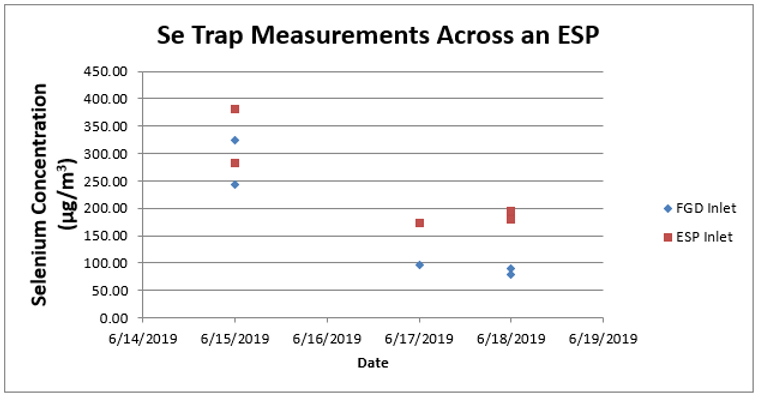The proposed rule for Steam Electric Power Generating Effluent Guidelines was set to place federal limits on toxic metals discharged from power plants and was finalized on September 30th, 2015. Effective on September 18th, 2017, the compliance dates were postponed so that the rule could be reconsidered and potentially revised. Although it is difficult to predict the timing, a new rule is expected within the next year.
In preparation for the new rule, Ohio Lumex has focused on analytical methods to help steam power generating facilities comply with the expected rule’s selenium and arsenic requirements. Ohio Lumex has developed a sorbent trap method that can simultaneously measure selenium and arsenic in a combustion gas stream. The laboratory has also developed a method to analyze selenium species in industrial process water. The two methods are described in detail below:
Se/As Traps
In oxidizing combustion gas, selenium and arsenic are expected to be present as selenium dioxide and arsenic trioxide, respectively. At typical sampling temperatures, these compounds are expected to be solids and overwhelmingly found adsorbed to fly ash, which is why the traps must be sampled isokinetically. Many plants have considered optimizing particulate control devices such as ESPs or Baghouses to remove selenium and arsenic before they reach Flue Gas Desulfurization Devices. Particulate control devices remove significant amounts of selenium, which is demonstrated by the trap measurements below:


On top of sampling sorbent traps isokinetically to measure total metals, it is possible to measure small particle selenium by placing a filter at the tip of the sorbent trap. This process is called partitioning and was demonstrated in the selenium trap results across a baghouse. Small particle selenium is generally more likely to make it through a particulate control device and be absorbed by FGD slurry downstream.
Selenium Speciation Using Chemical Treatment of Samples
Selenium is absorbed into FGD slurry as the selenite ion, which is relatively insoluble and can thus be easily removed. Certain slurry conditions can cause selenite to oxidize into selenate. Selenate is soluble and therefore, more challenging to treat in effluent.
To understand how selenium behaves in FGD slurry and downstream process water, it is beneficial to measure selenium species by their oxidation state. This can be achieved by using Hydride Generation Atomic Fluorescence Spectrometry (HG-AFS), which selectively measures selenite, or Se (IV).
Selenium (IV) is measured by analyzing samples directly. Total inorganic selenium, which includes Se (VI) and Se (IV), is determined by chemically treating samples with a reducing agent. Total selenium is determined by digesting the sample and oxidizing all selenium species to Se (VI) with subsequent reduction to Se (IV). Using this procedure, it is possible to report values for the following selenium species:
- Total Selenium
- Total Inorganic Selenium
- Se (IV)
- Se (VI)
- Other species which may include elemental selenium, organoselenium, and selenocyanates
